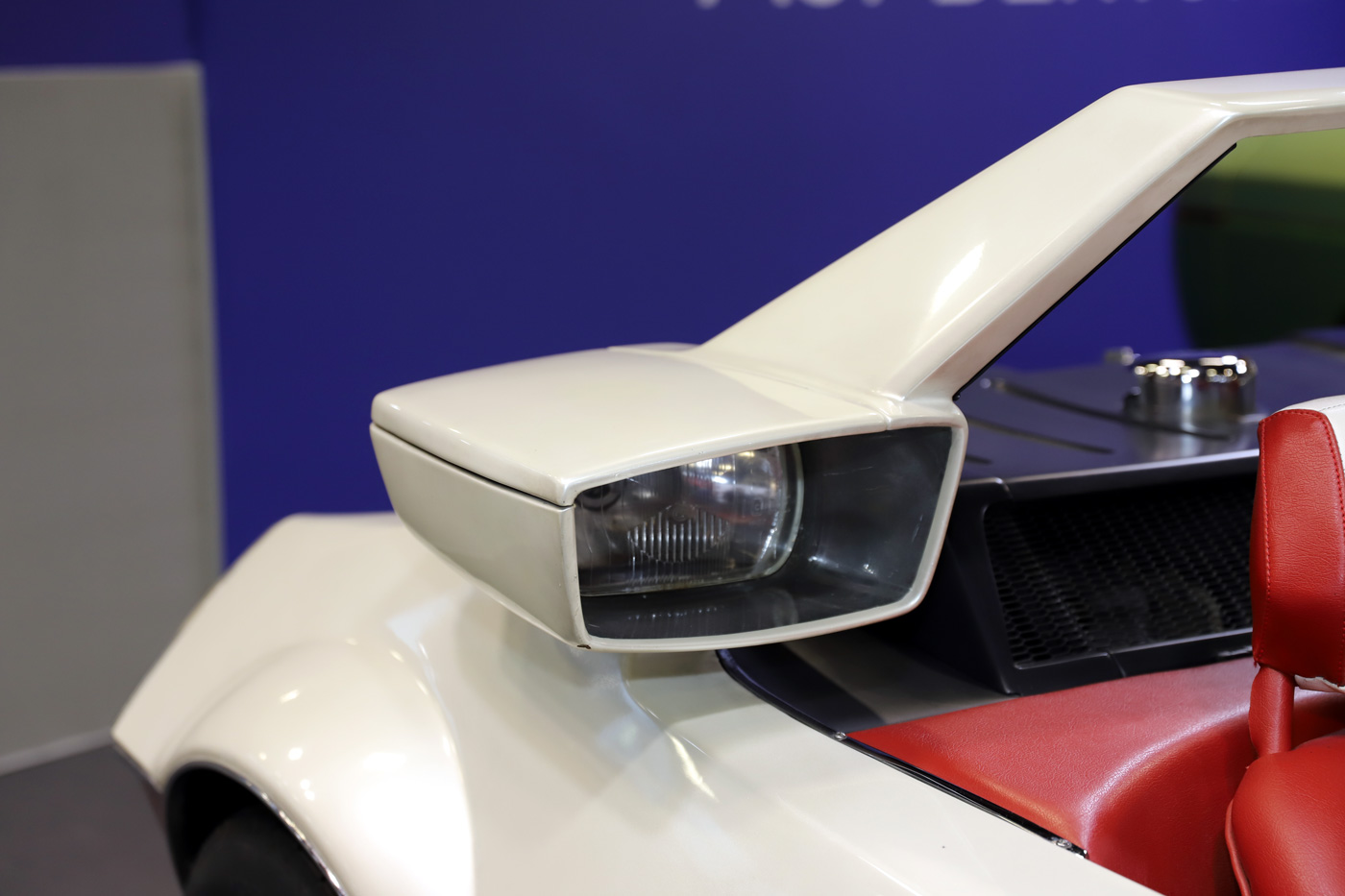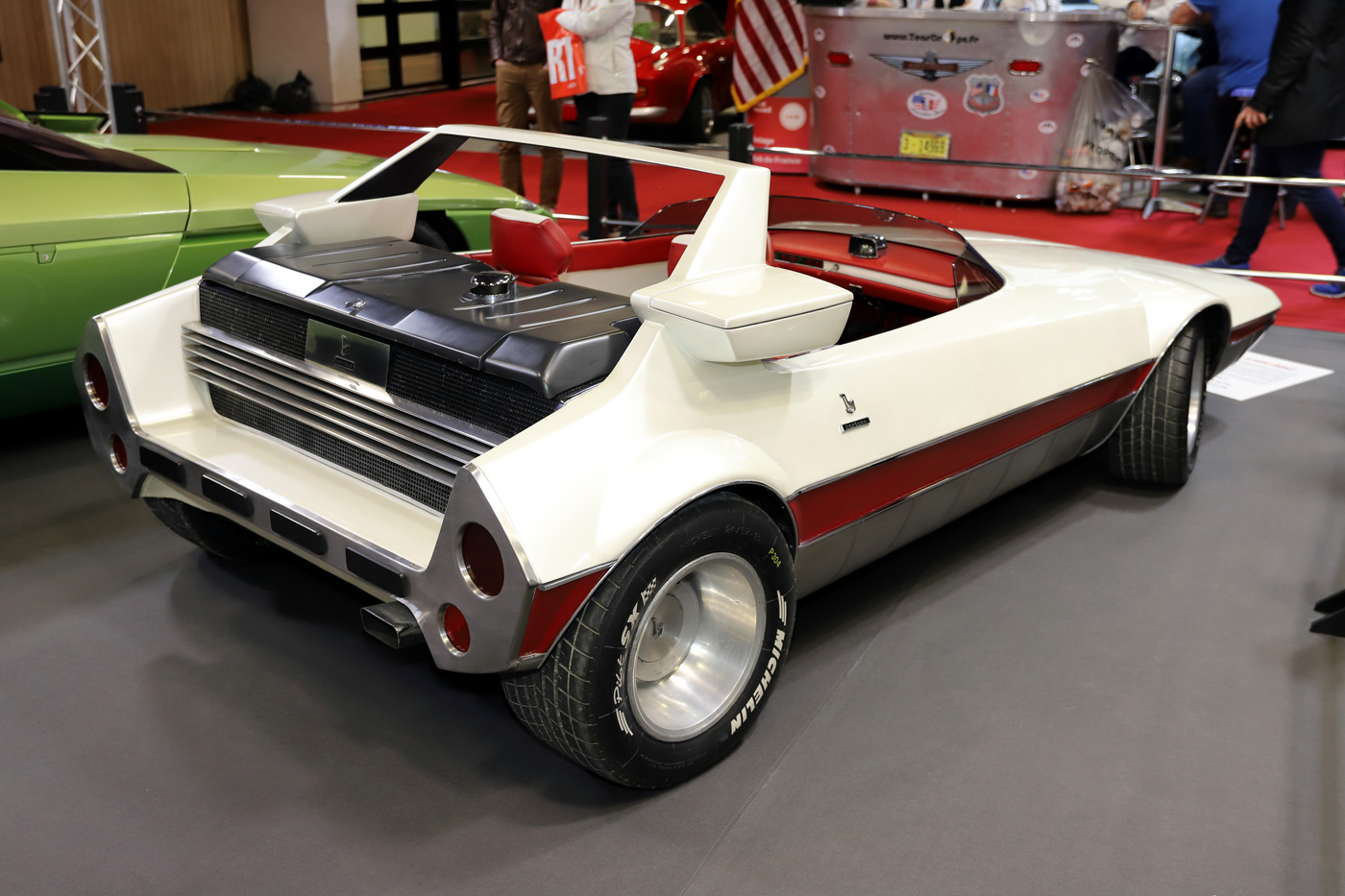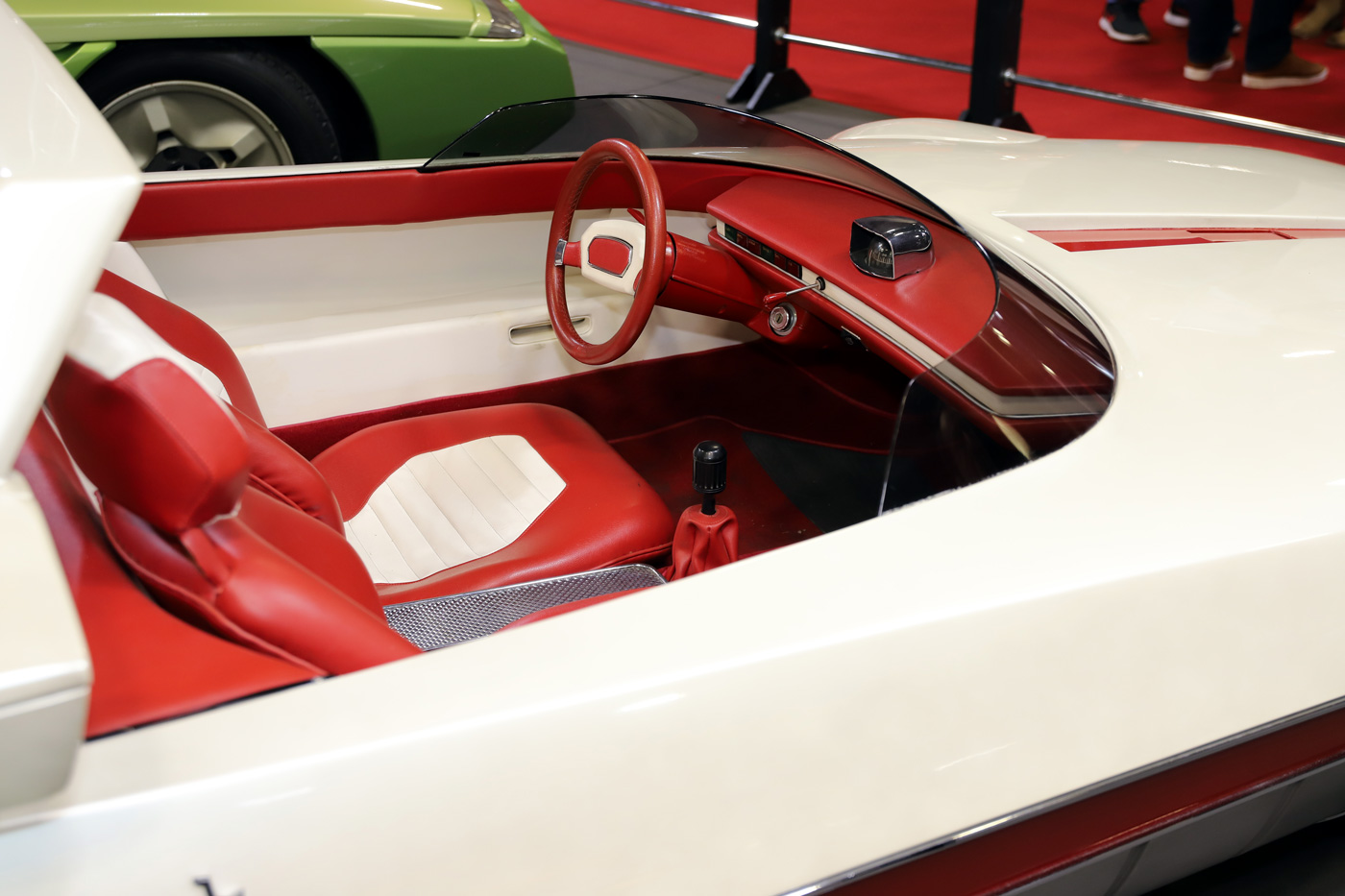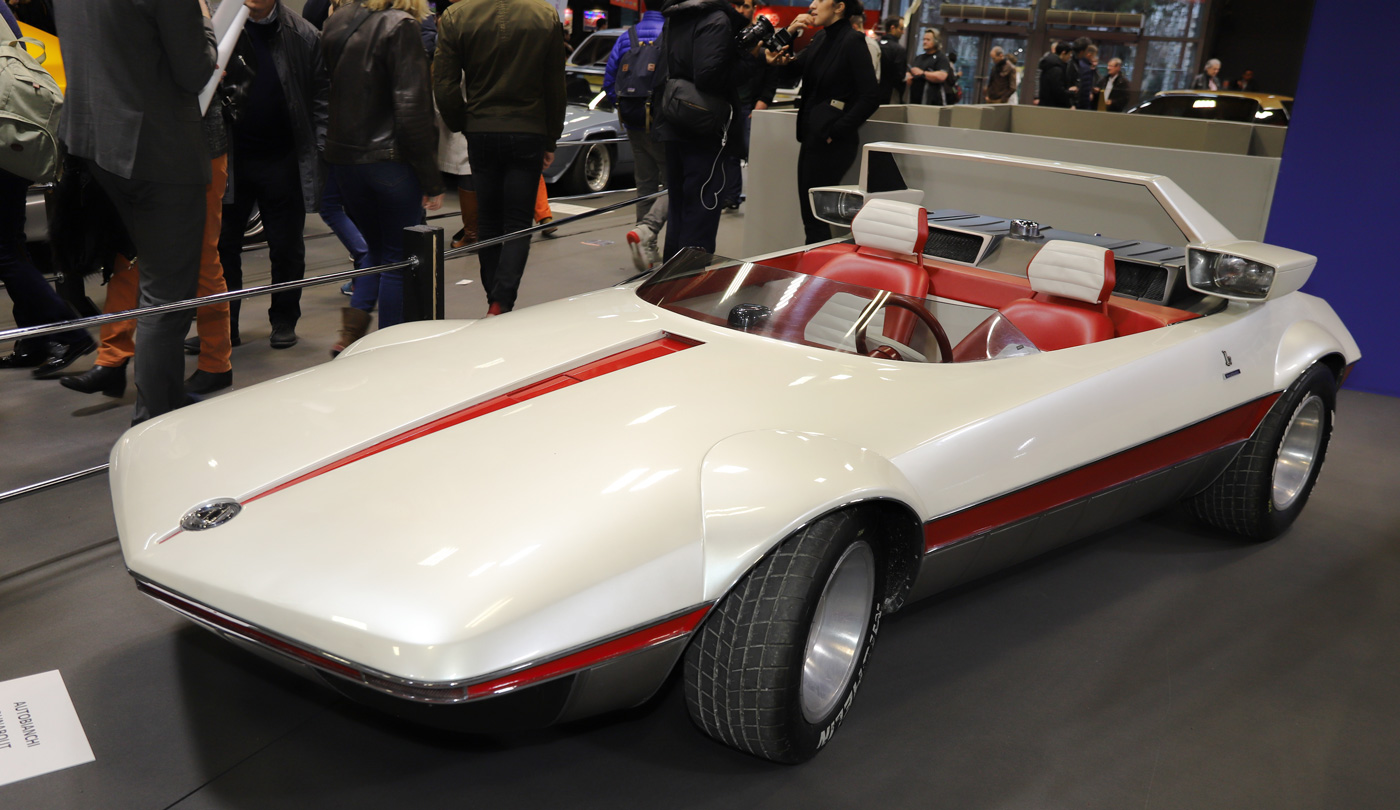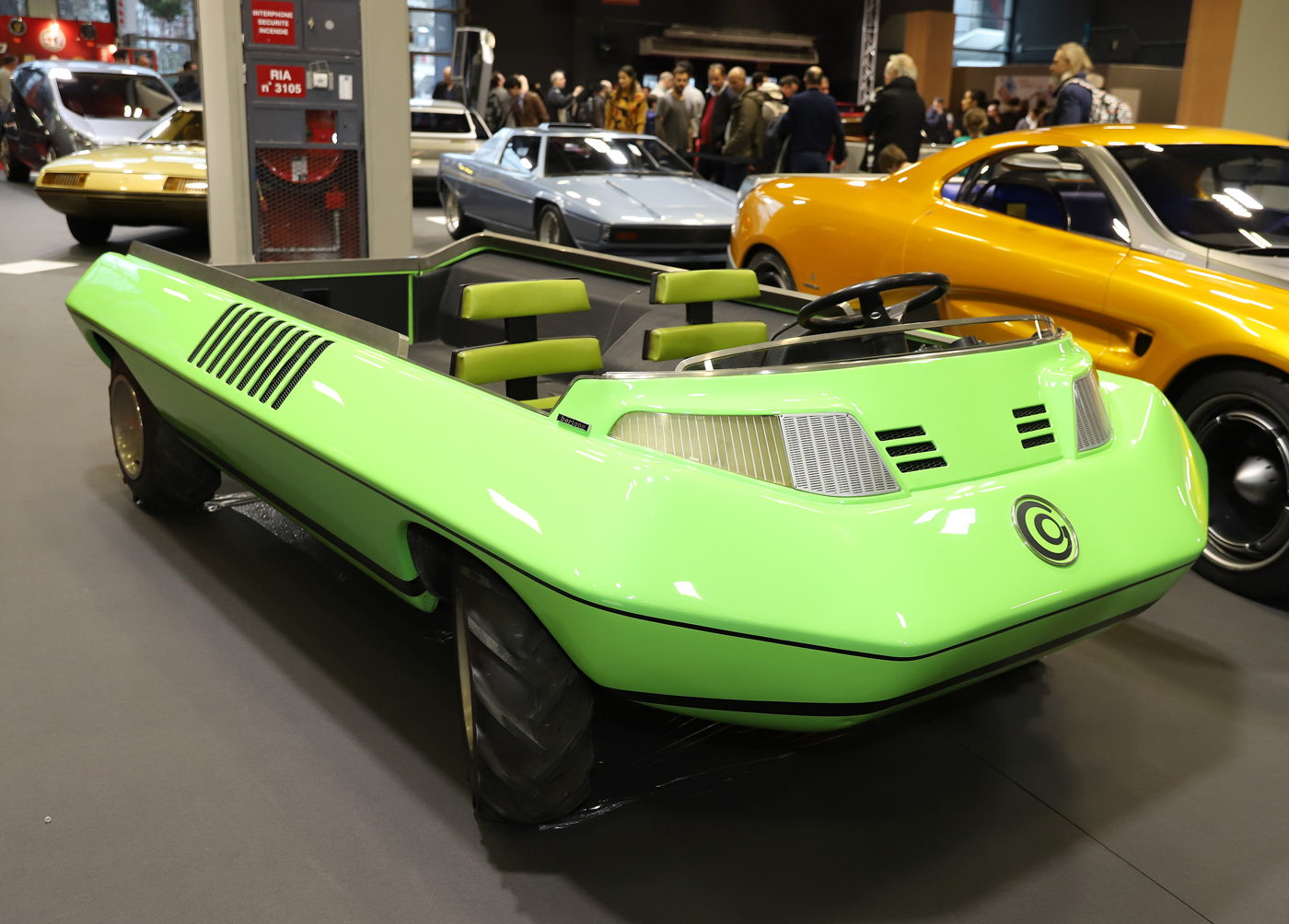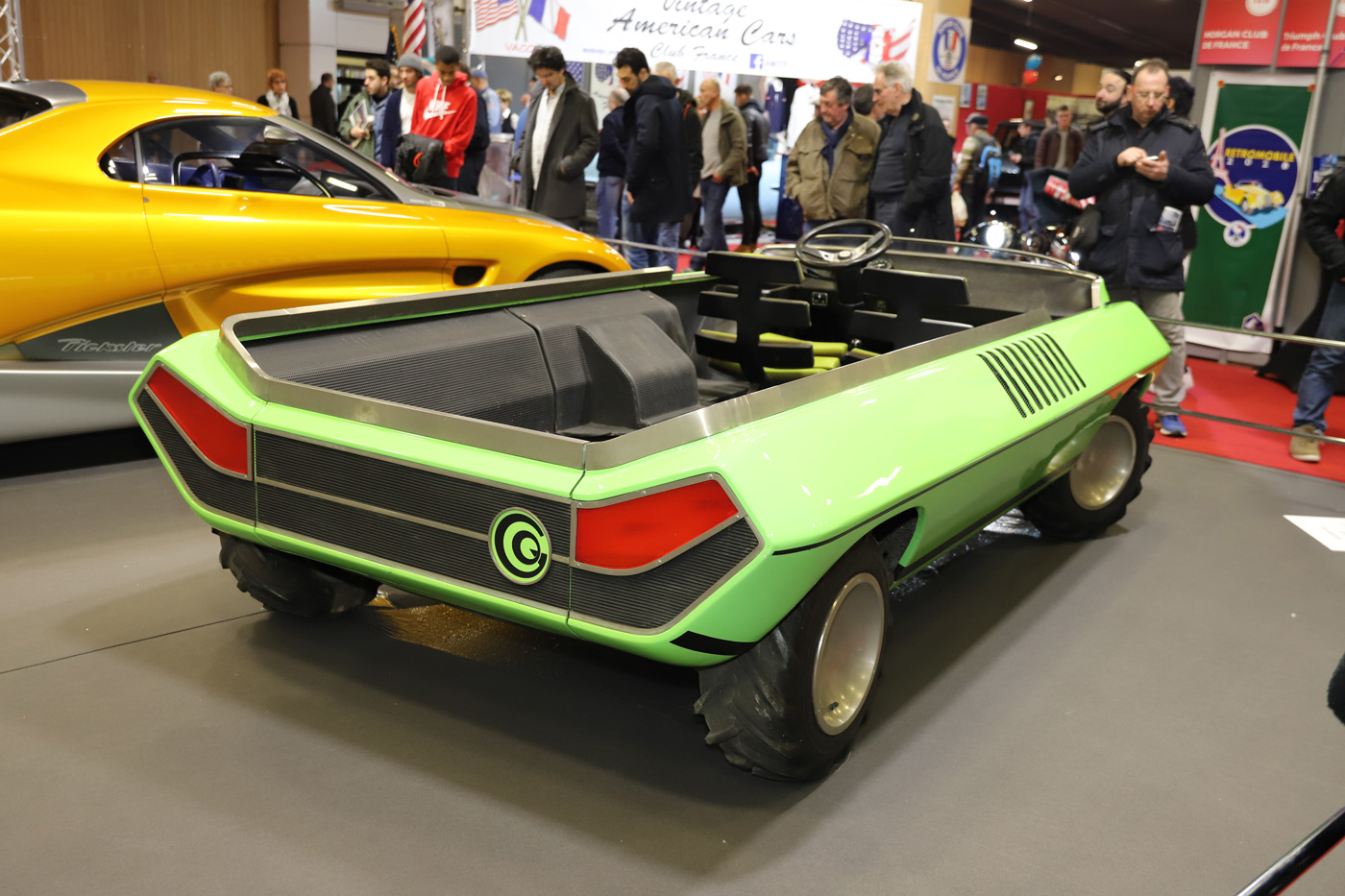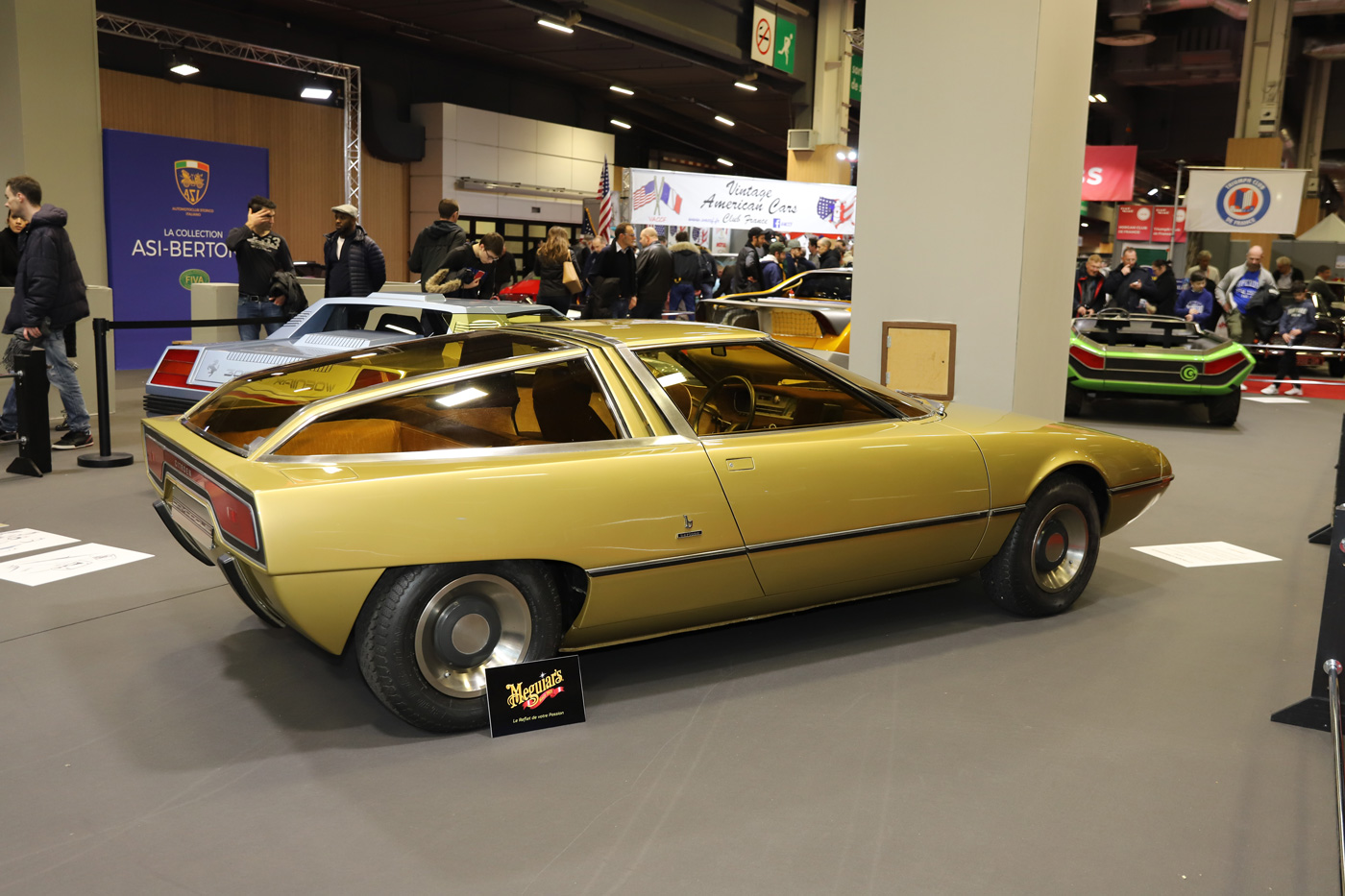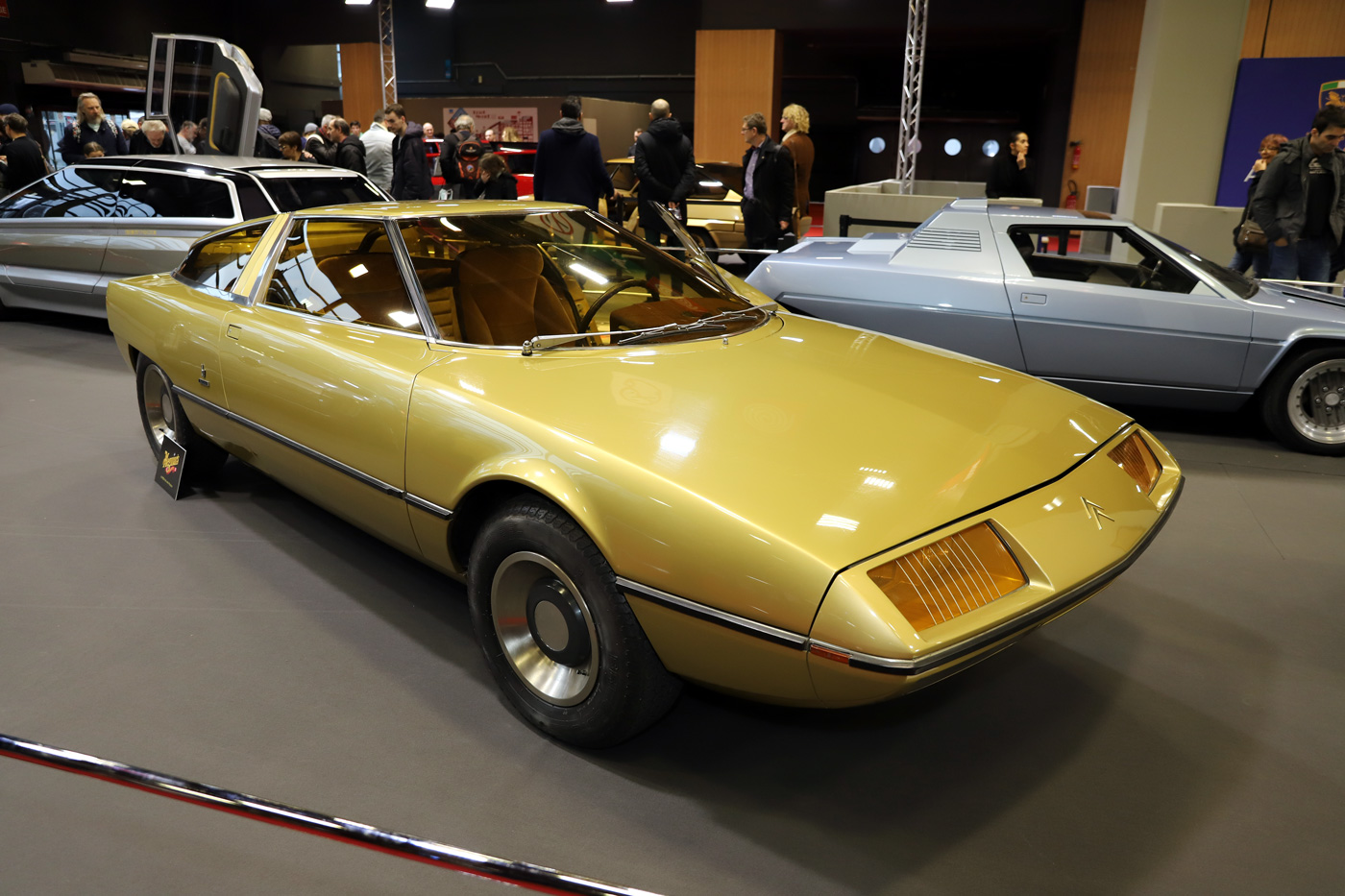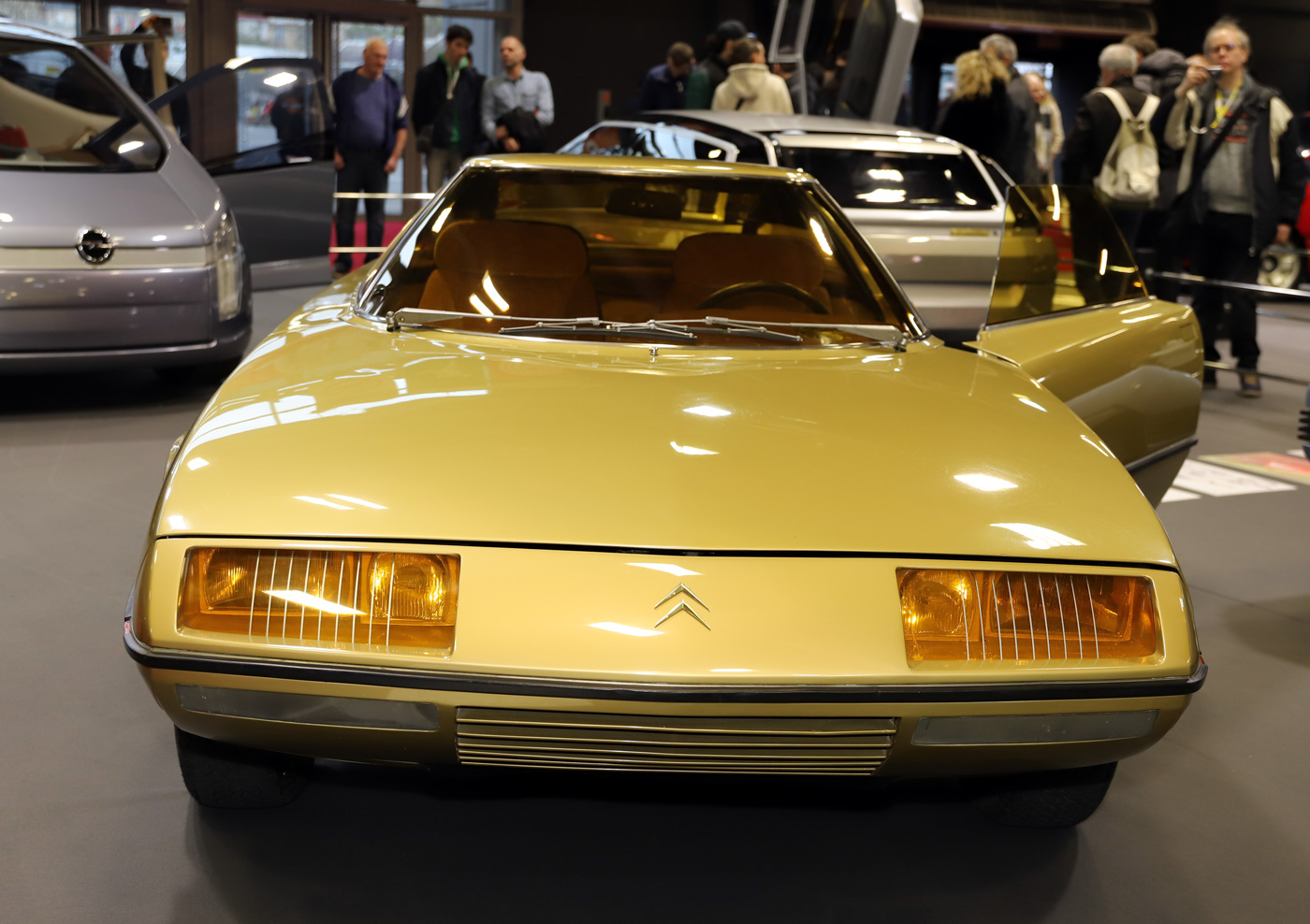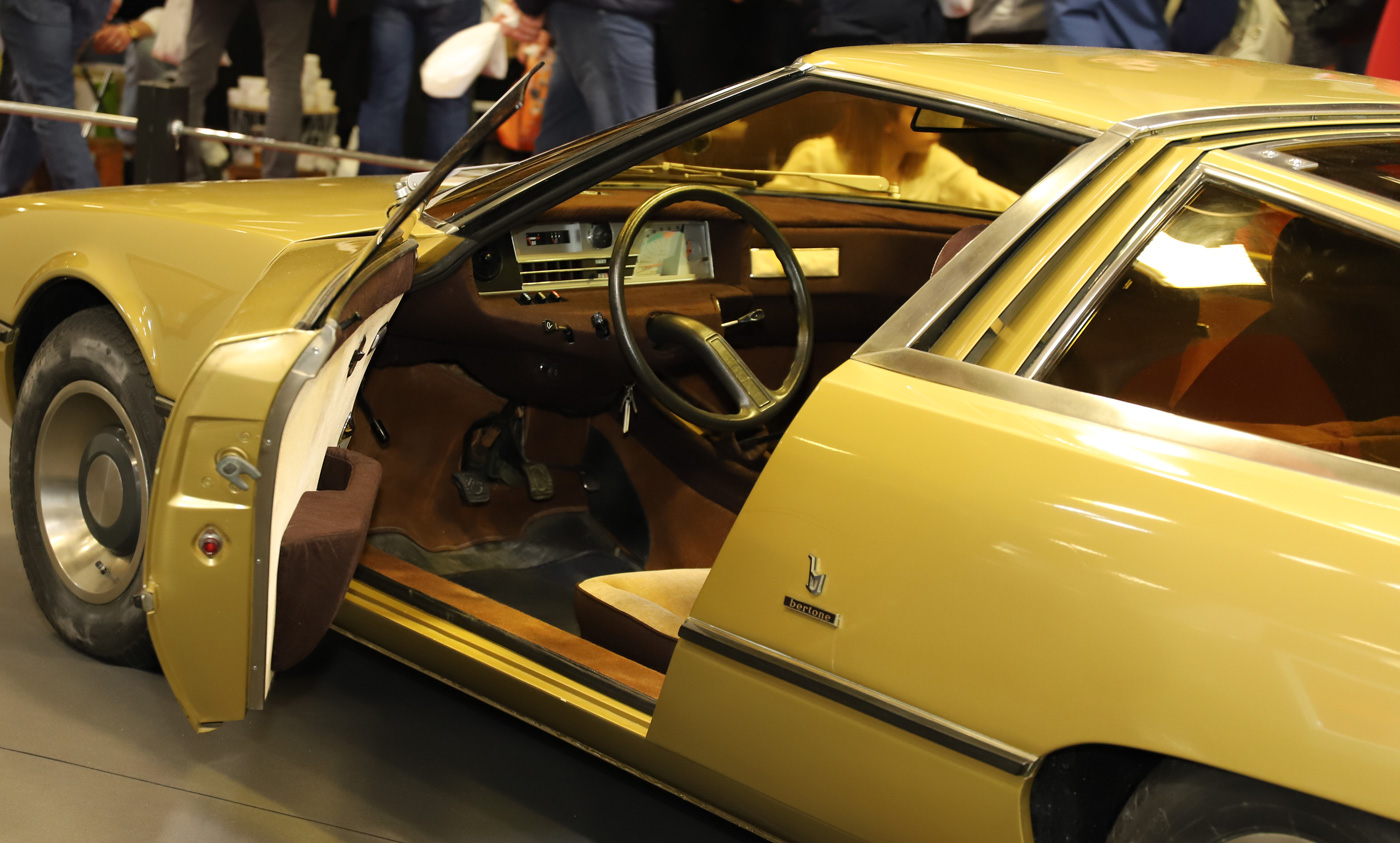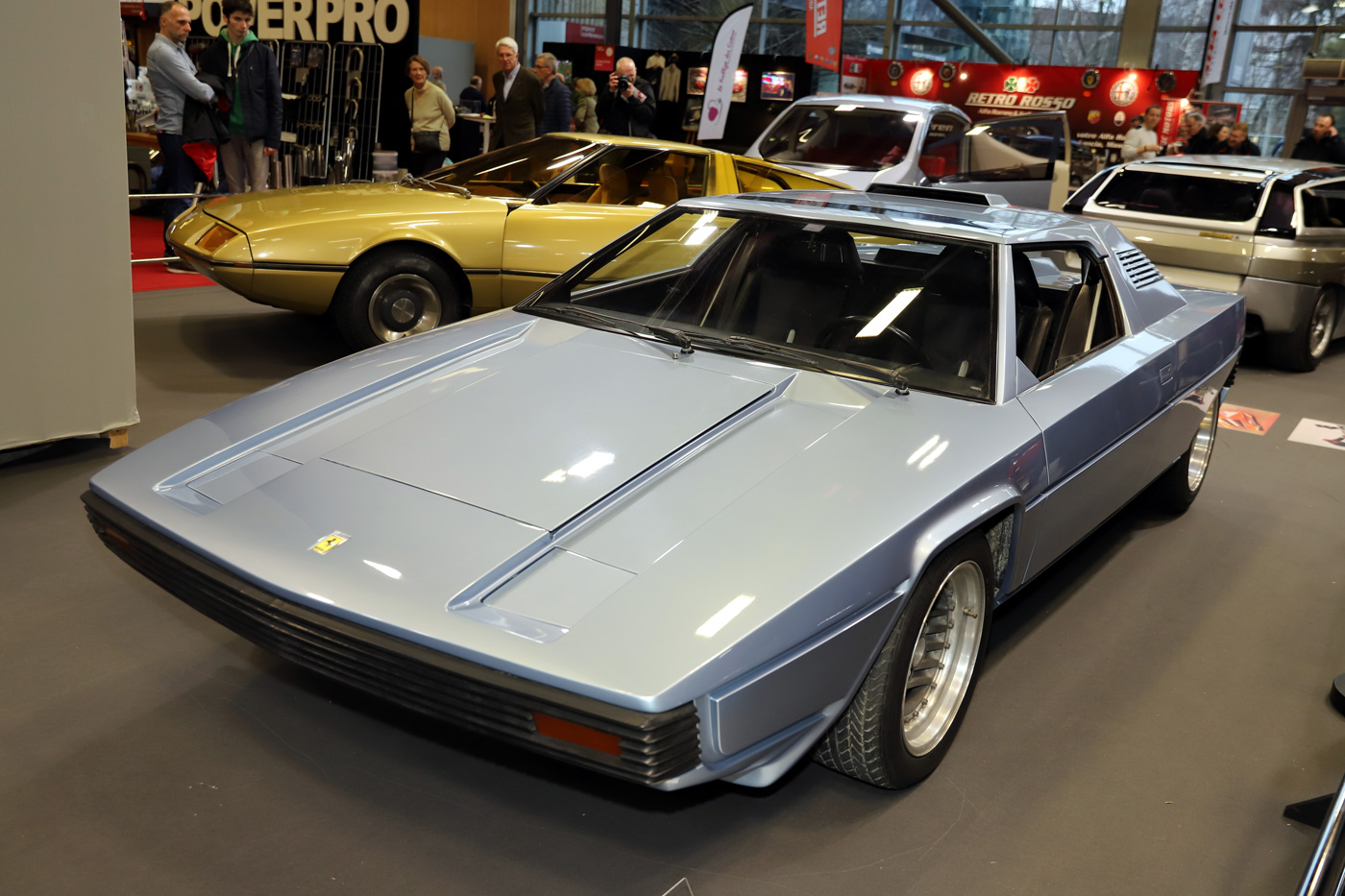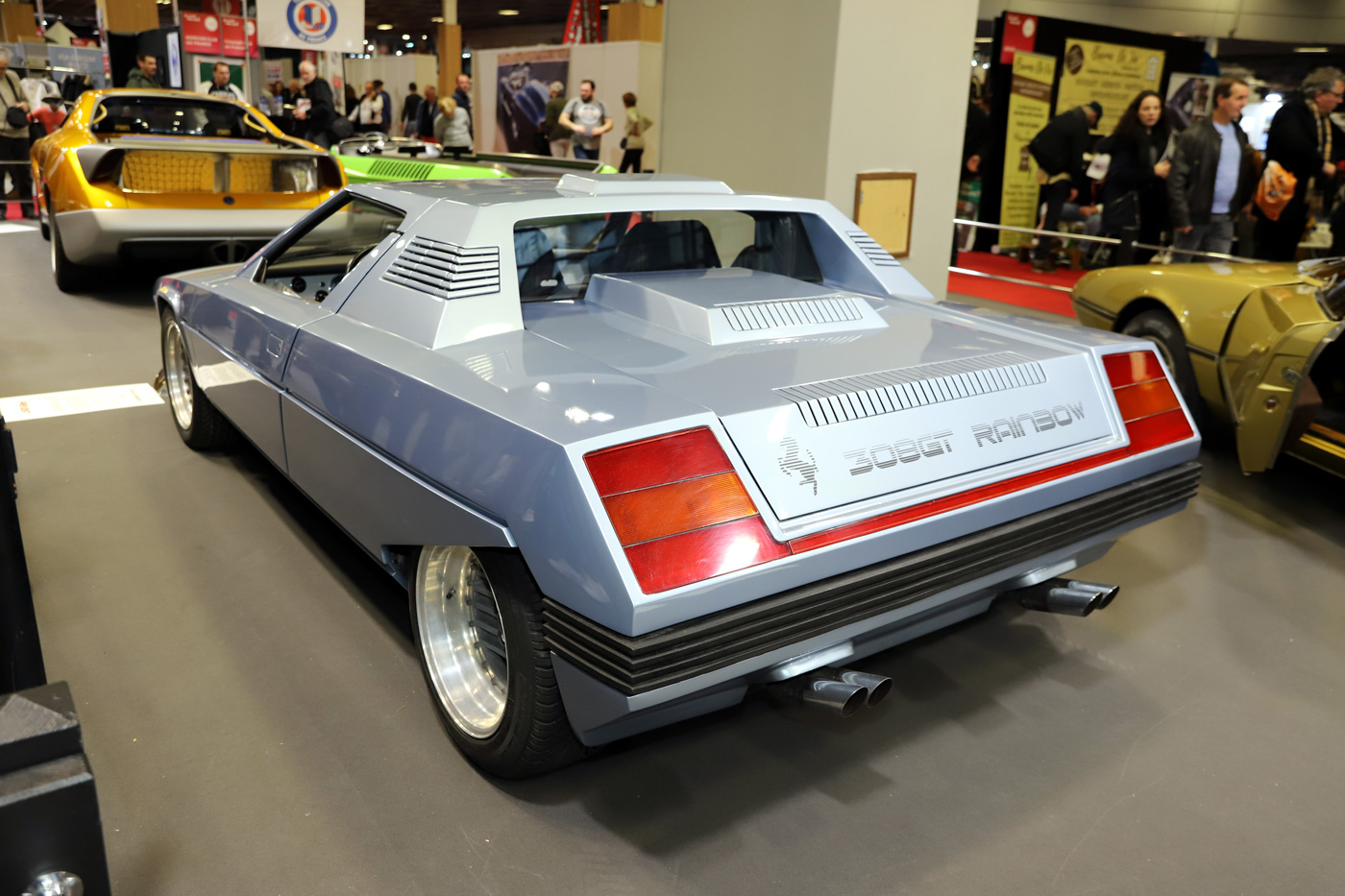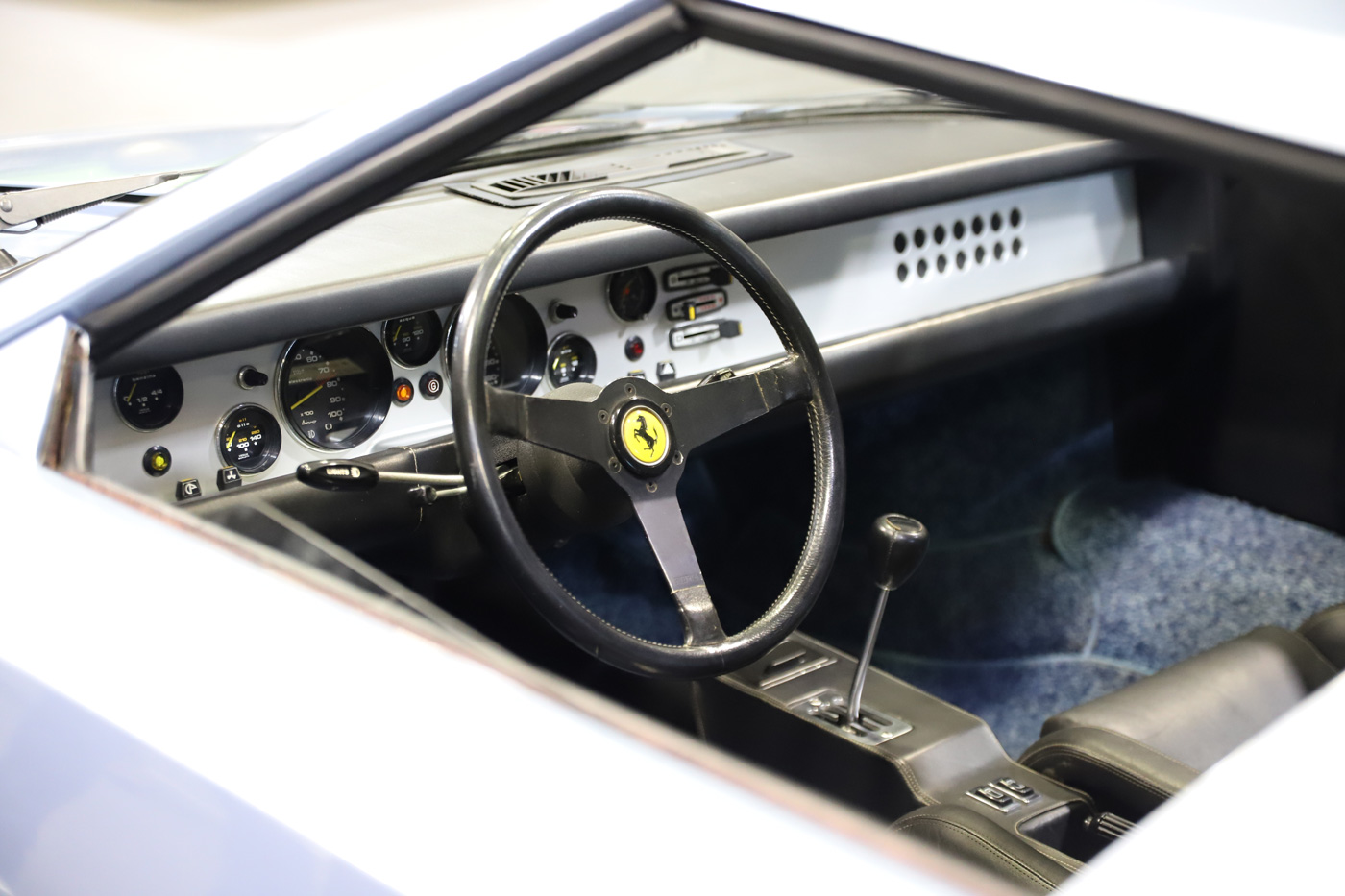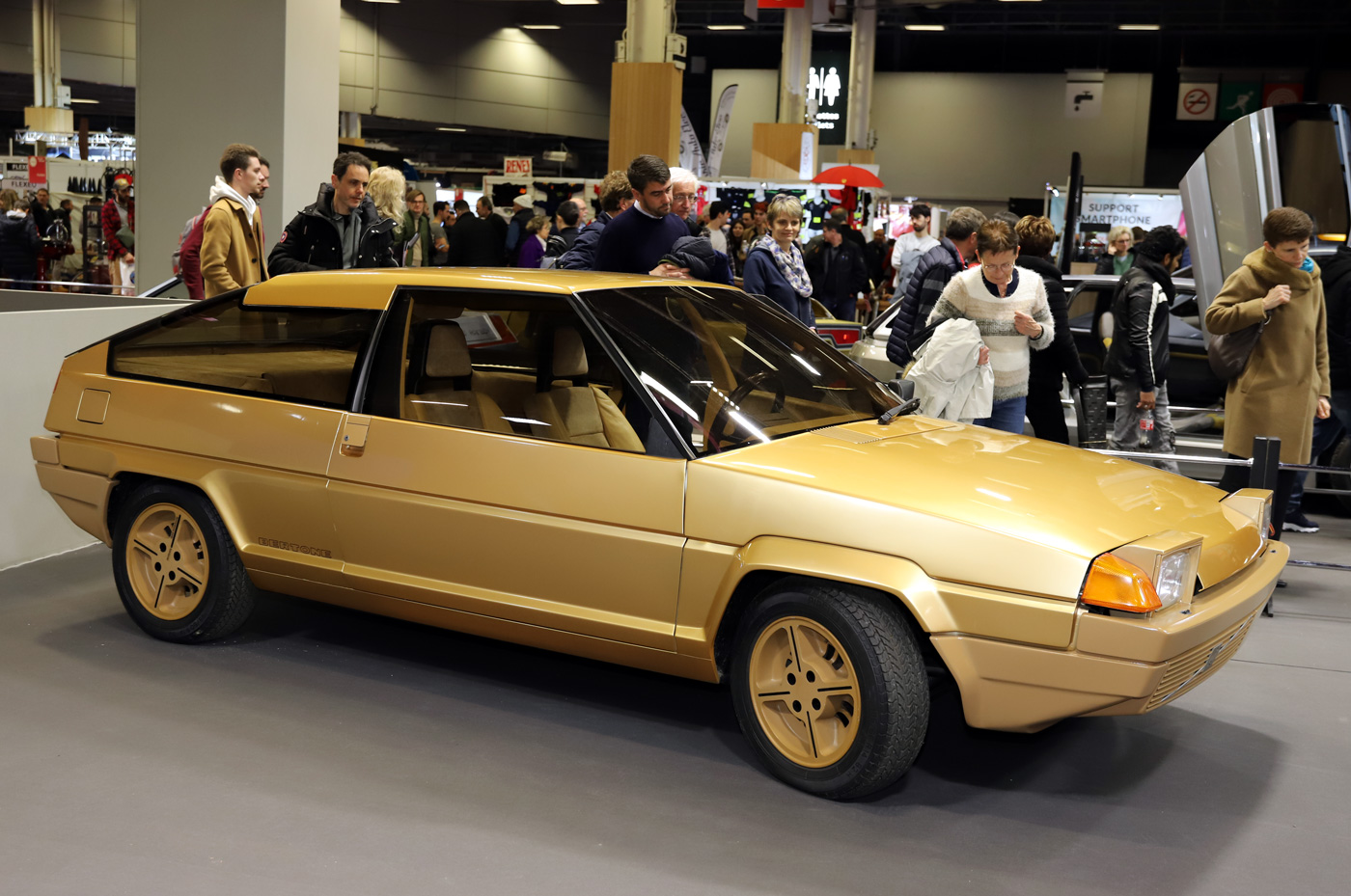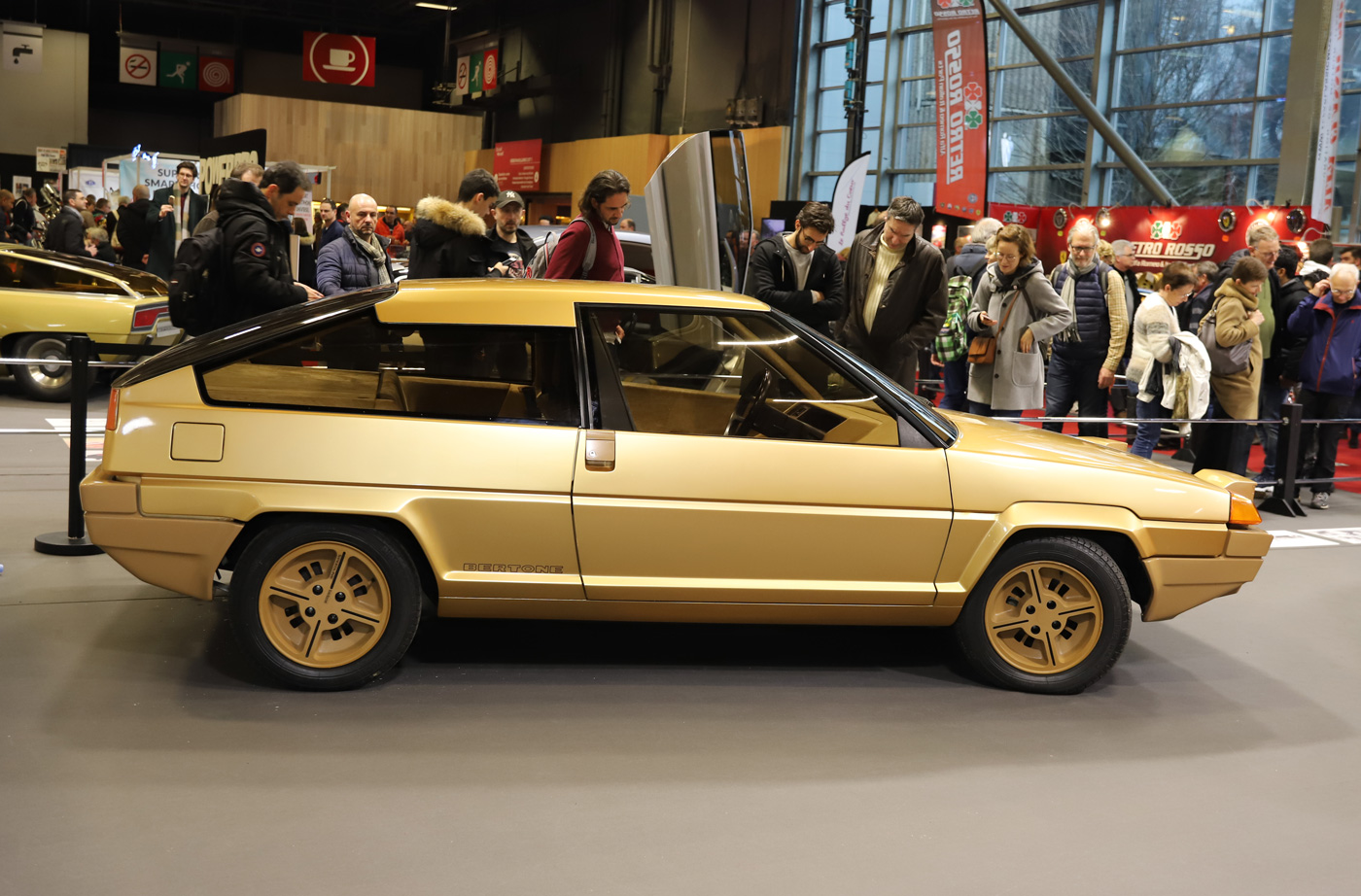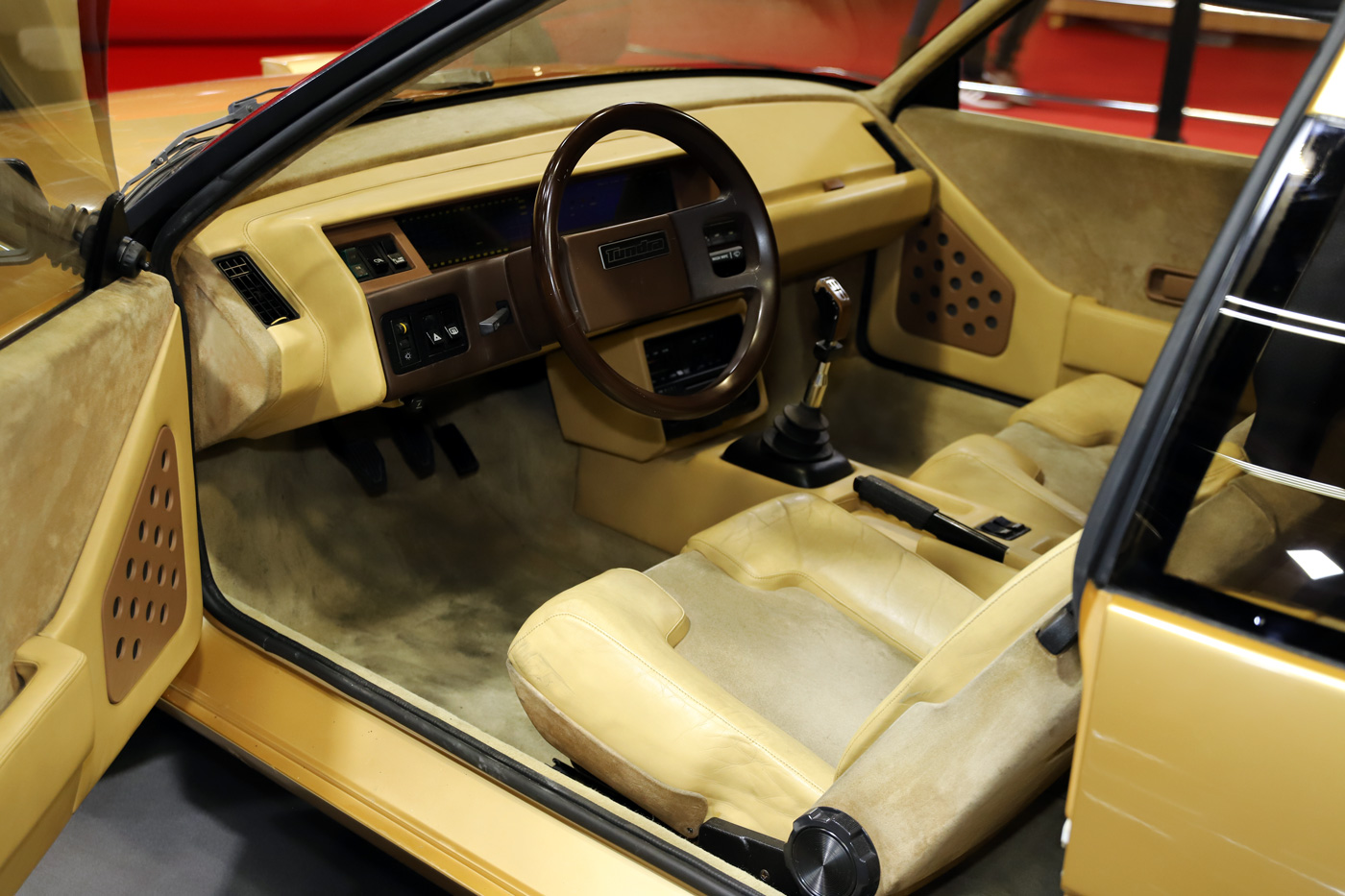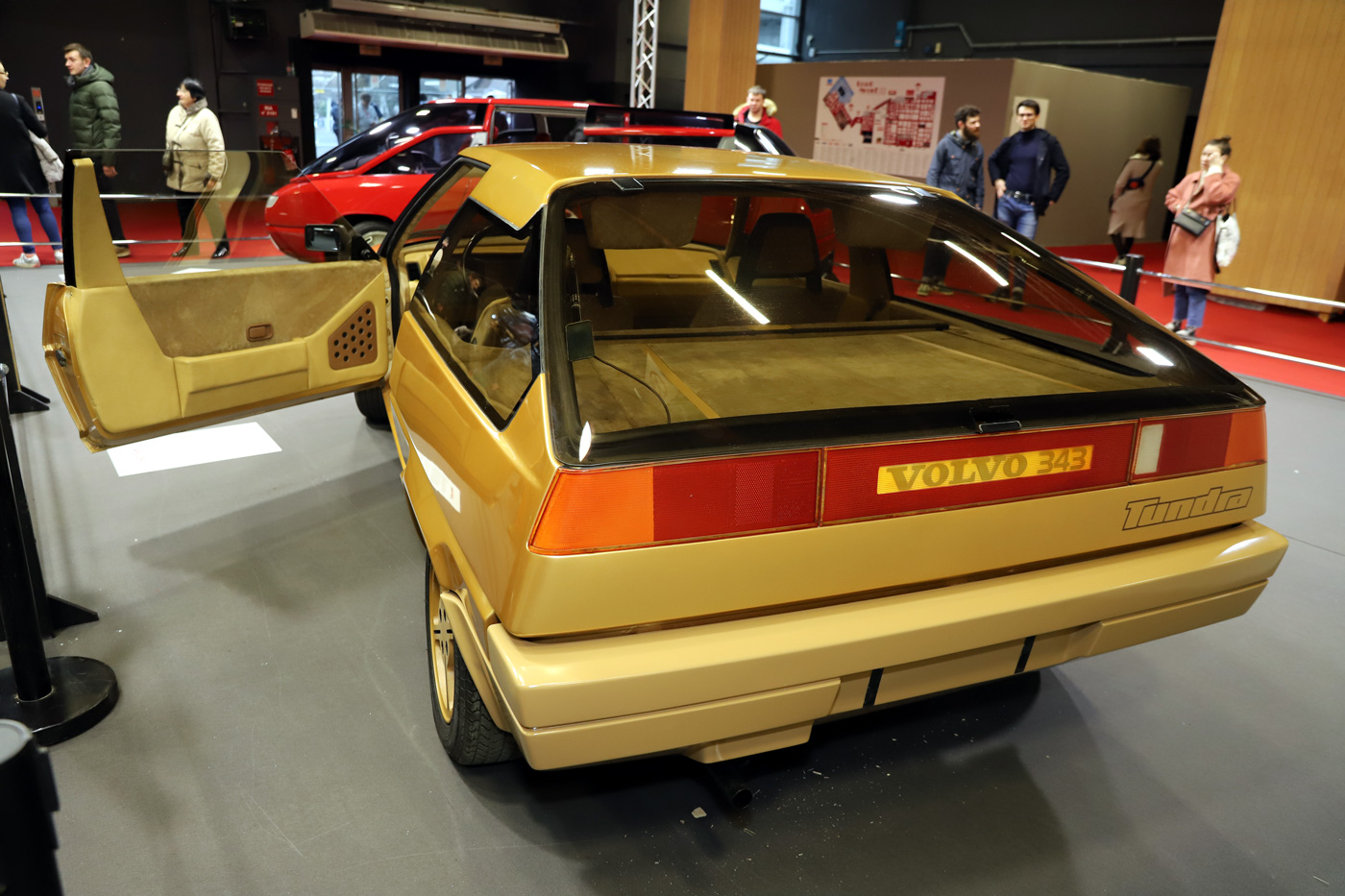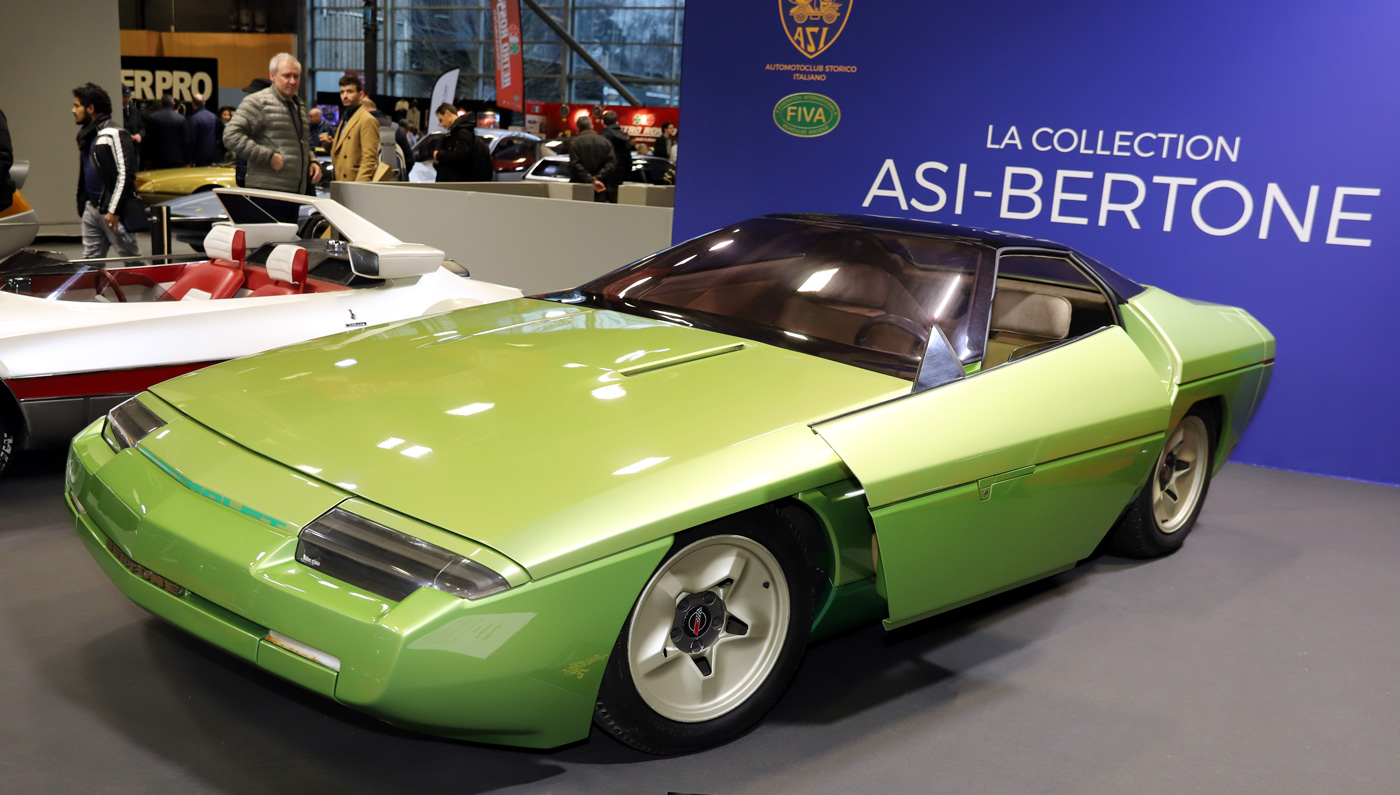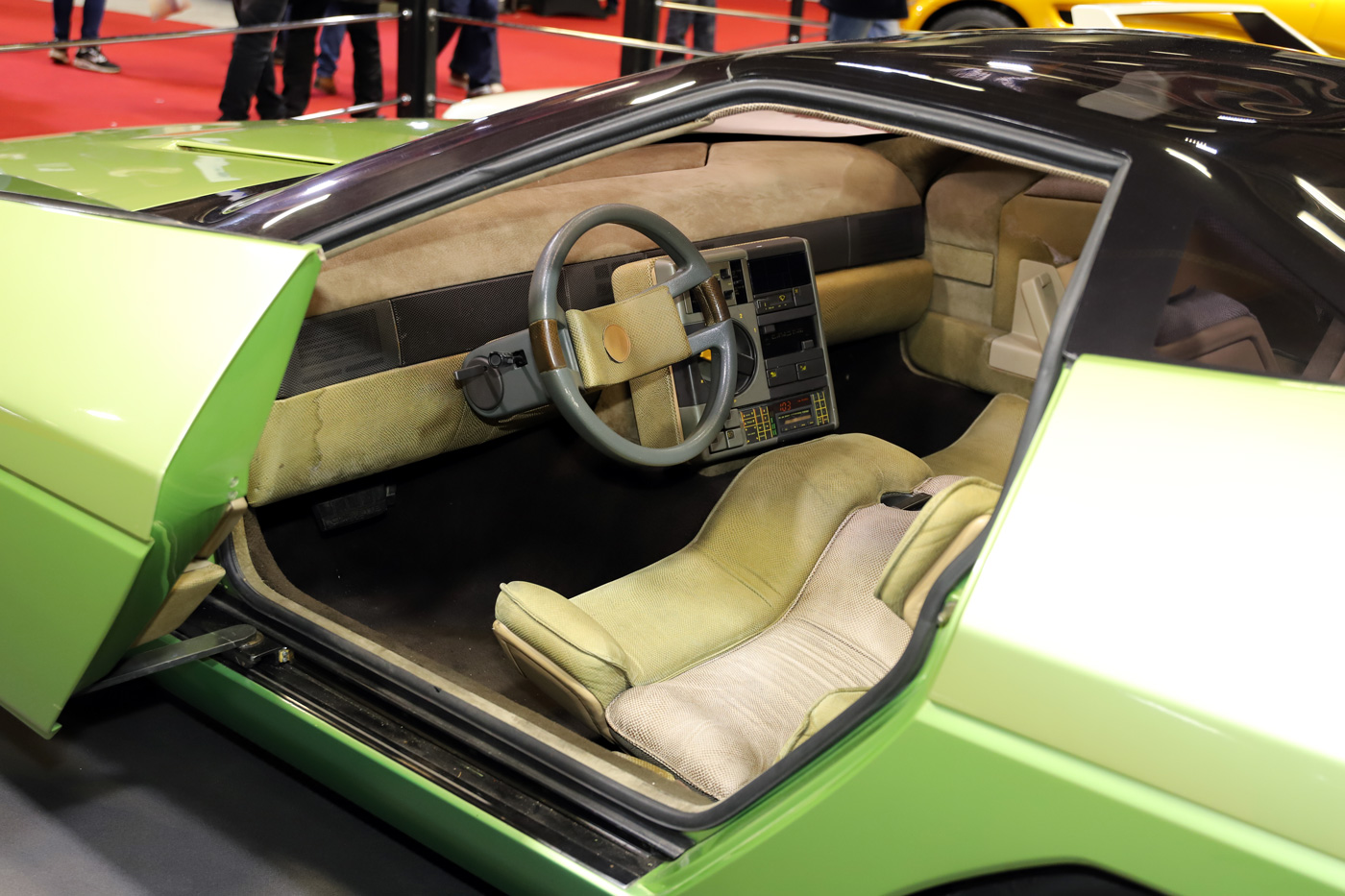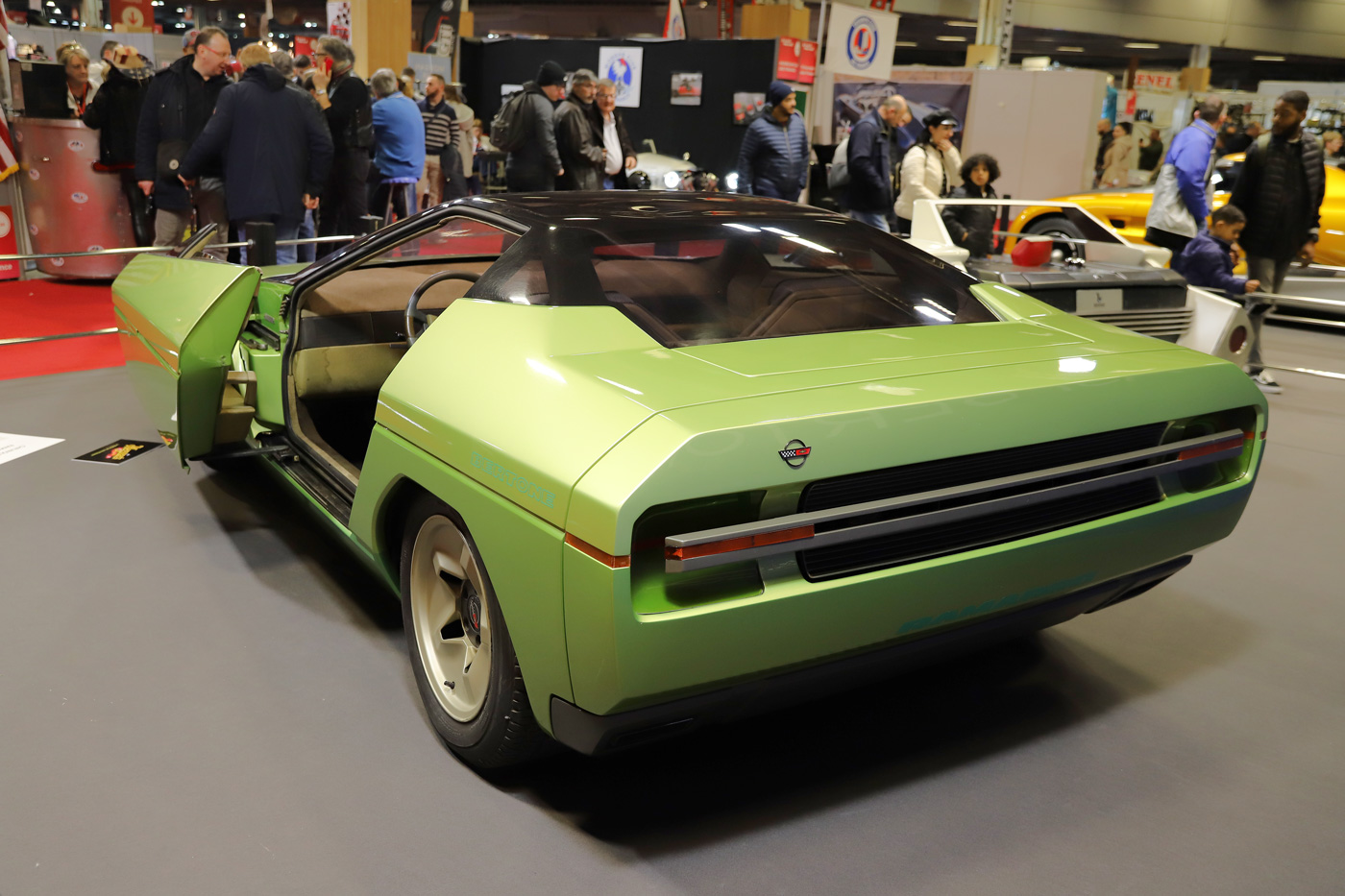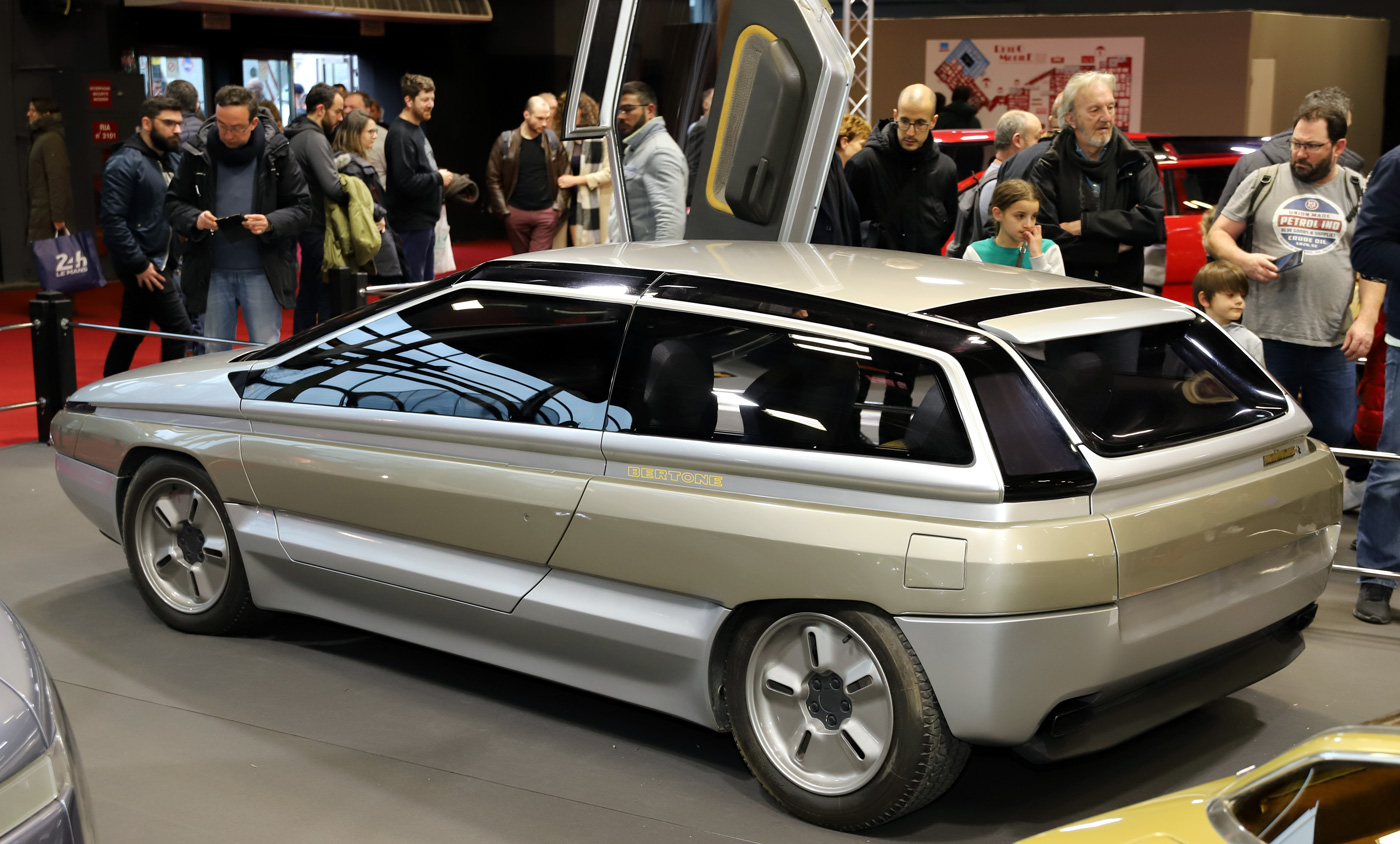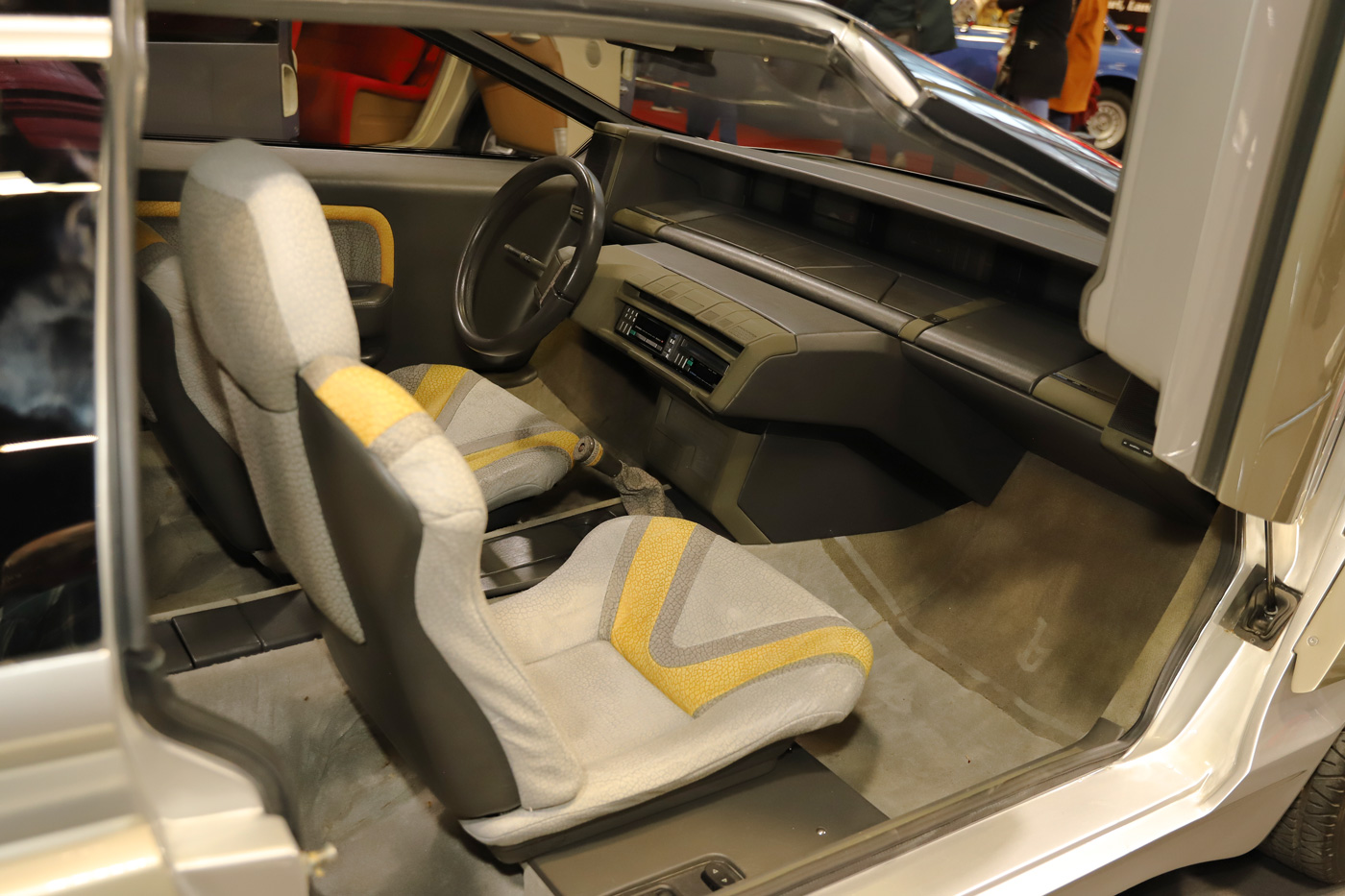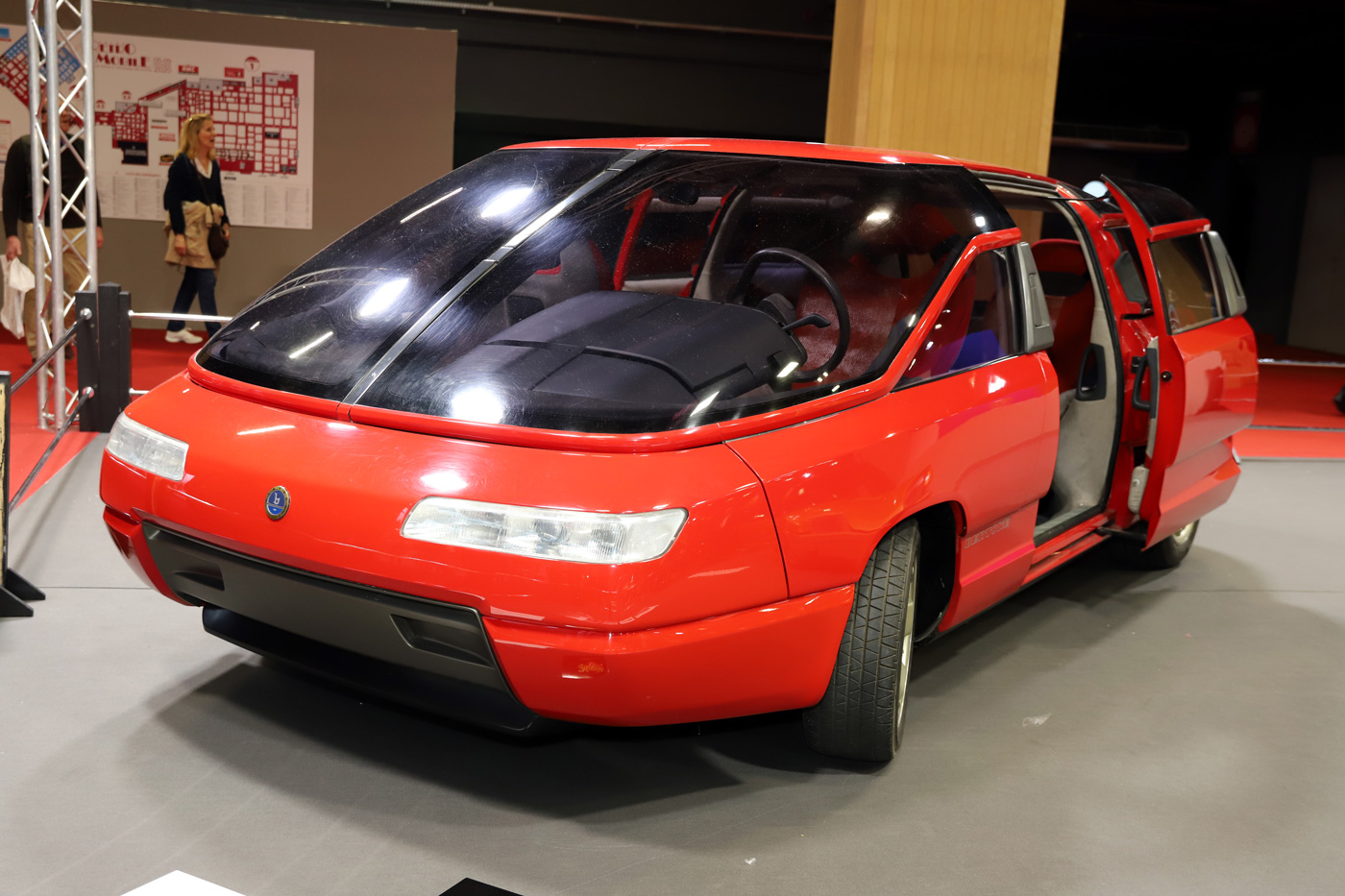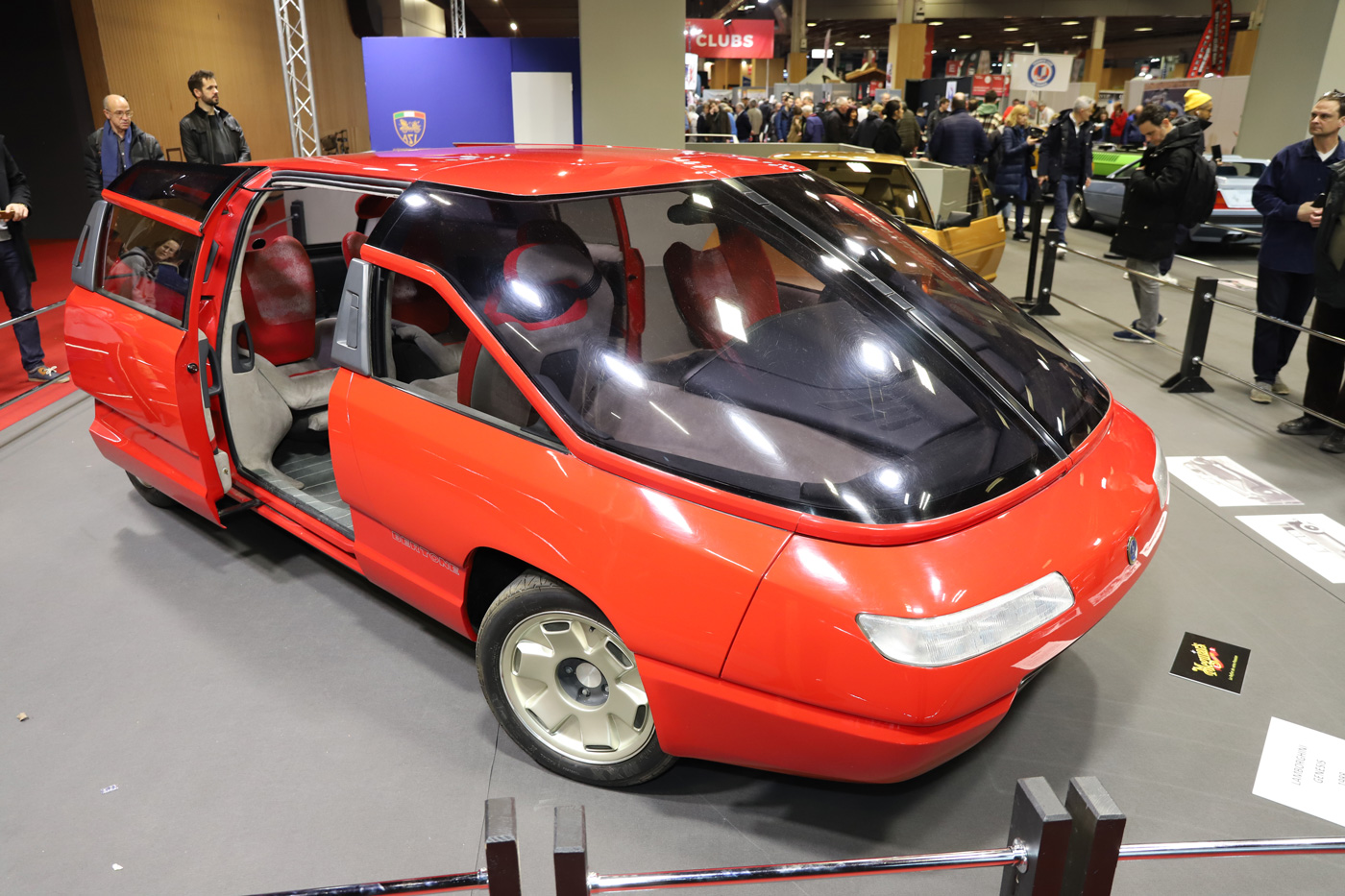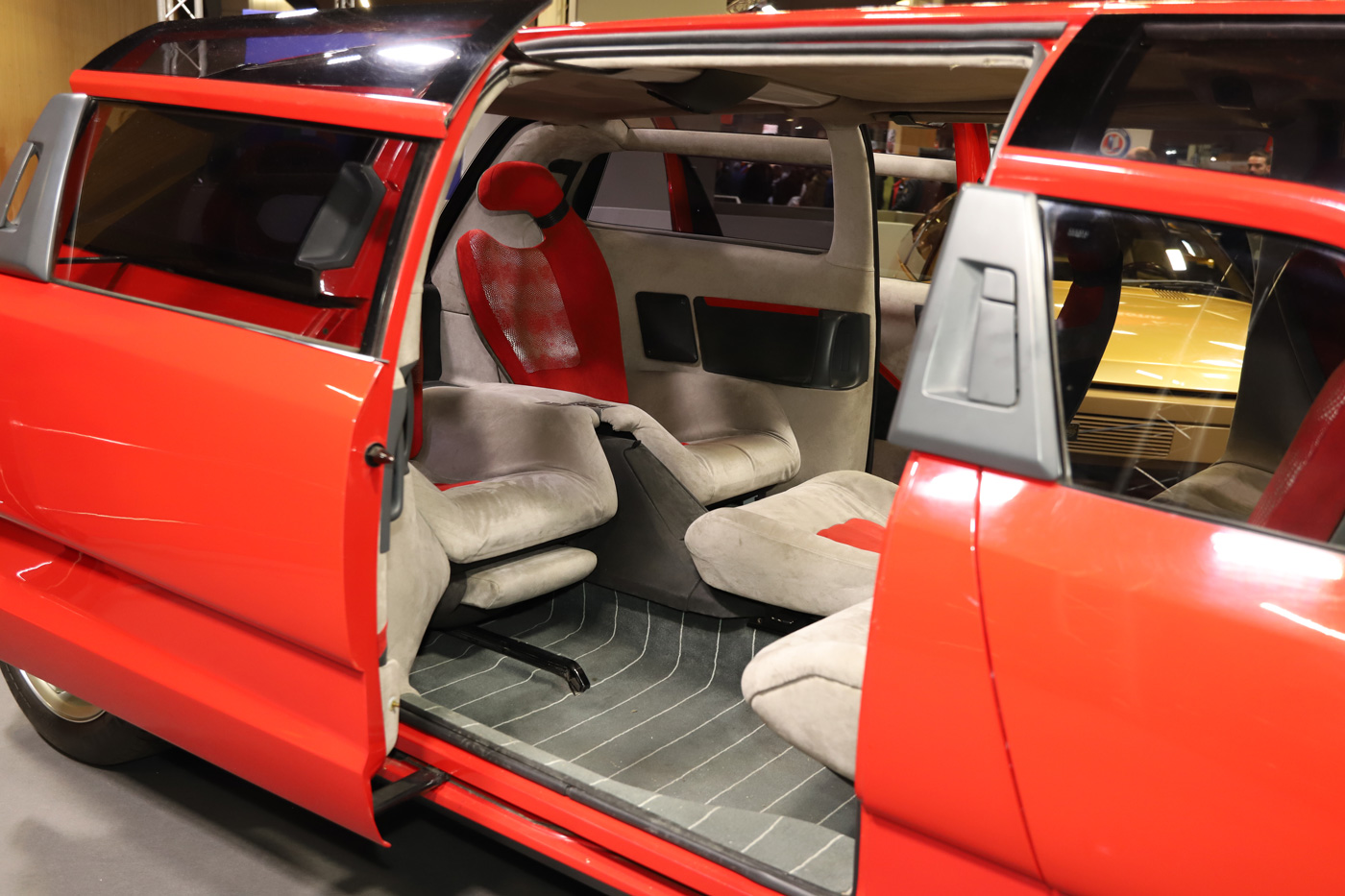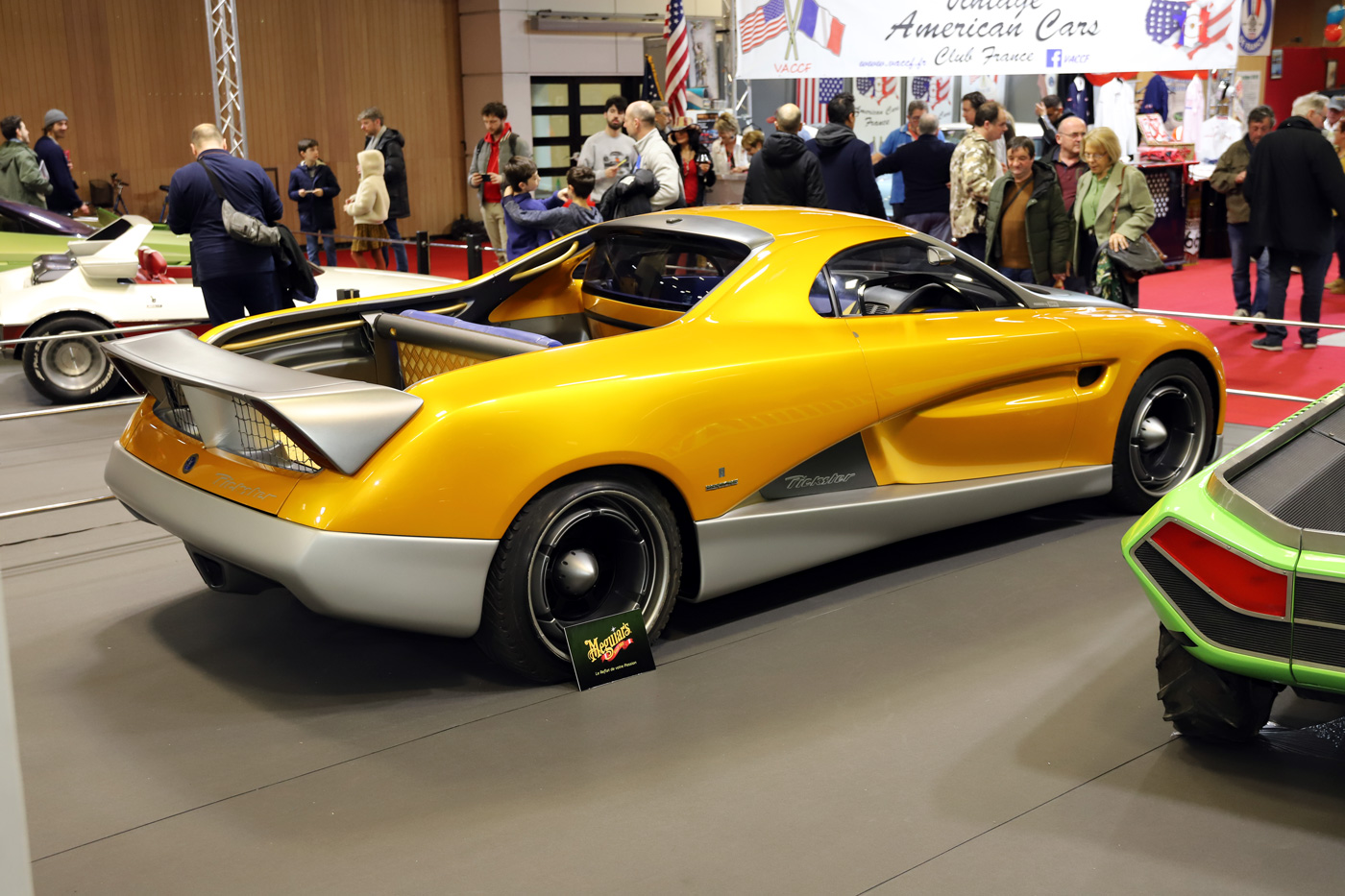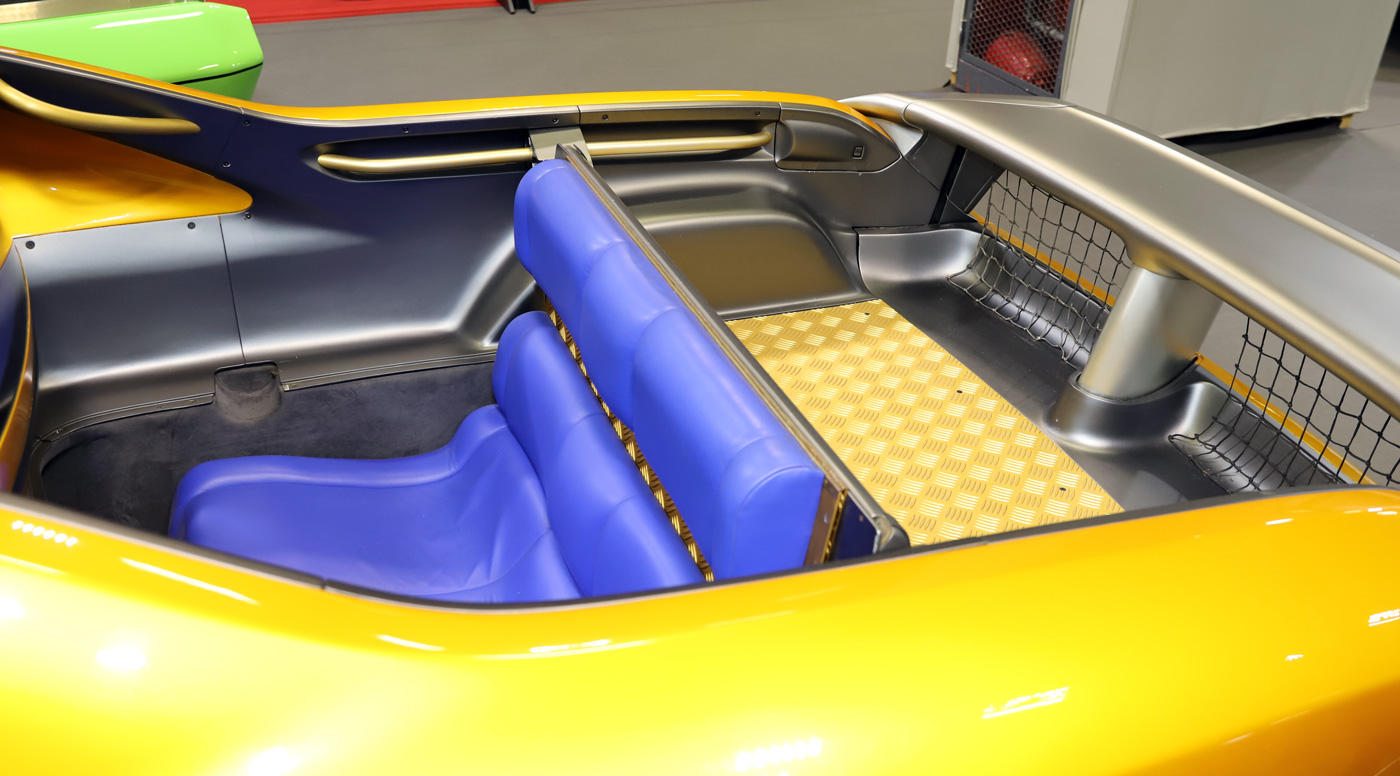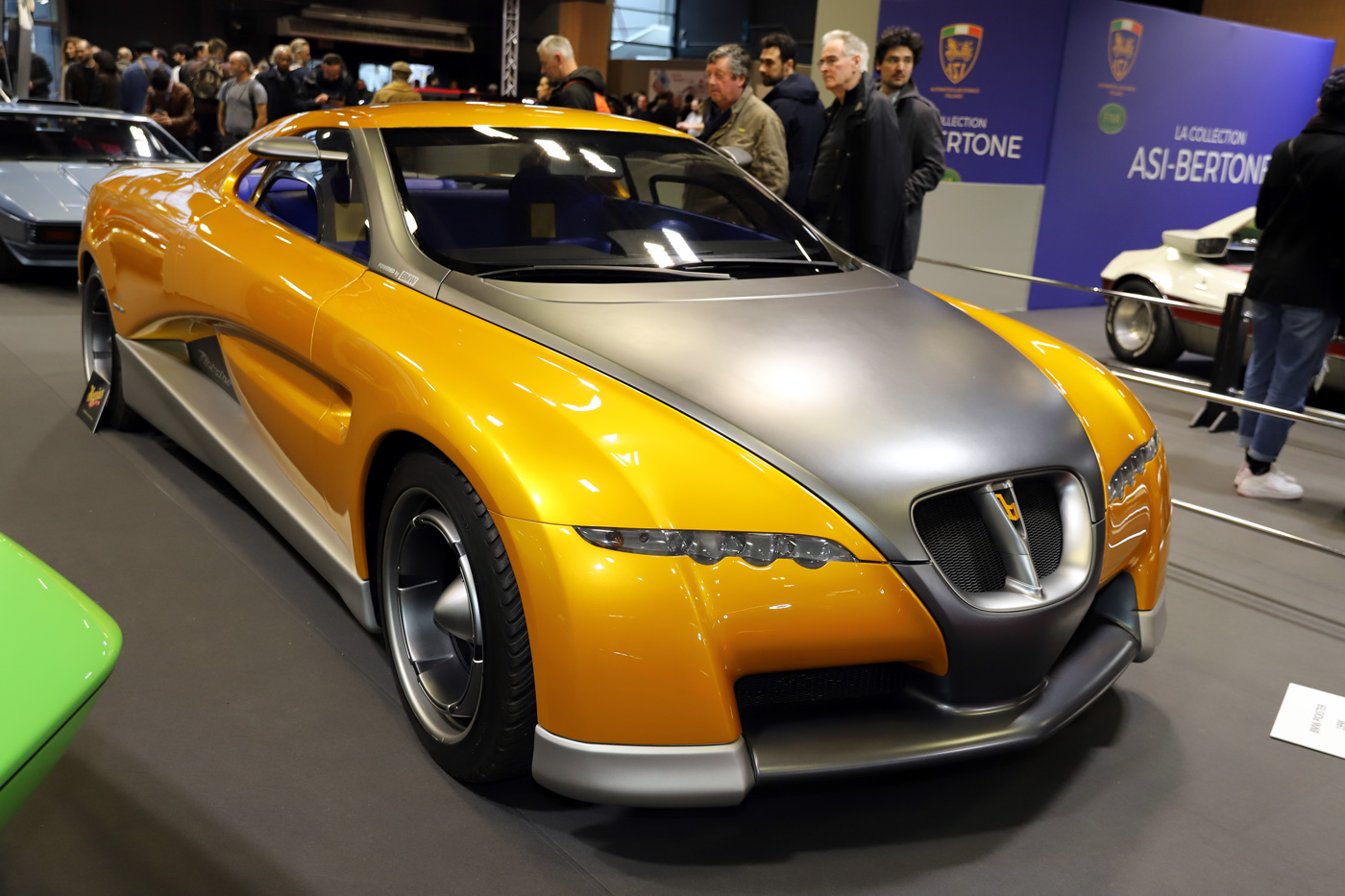Photos by Hugues Vanhoolandt
Text by staff
Despite being under the weather in more ways than one, Hugues Vanhoolandt returned from Retro last week and was able to send us a selection of photos from the display of the Bertone collection, which now includes a few post Gandini era concept cars. While at the show, Hugues determined to wait and snap interior photos when possible, as unusual and advanced interiors were the hallmark of Gandini’s art, and it was carried on after his departure from Bertone in 1978. The magic left with him.
Rather than relying on the placards to explain the concept cars, we dug out the massive two-volume Marcello Gandini set and quoted from there. And BTW, the book is still avialable from Dalton Watson, and can be ordered here Marcello Gandini, Maestro of Design.
Below the Vanhoolandt images is a list of further articles on the topic of the Bertone Collection and Marcello Gandini as previously published in VeloceToday.
Autobianchi Runabout 1969
If it looks a bit like a speedboat, it is because Marcello Gandini’s forerunner to the Fiat X 1/9 was inspired by several speedboats in the late 1960s. Gandini recalled that they were very innovative, “…and I was keen to try out some of the cues for automotive styling.” What resulted was a car “that was instinctively boat like in its design details and appearance.”
Suzuki Go 1972
Another design stimulated by boats was Marcello Gandini’s 1972 Suzuki Go, using a three cylinder 750cc motorcycle engine with a five speed gearbox developed by Bertone. Said Gandini “I was inspired by the increasingly popular rubber inflatable dinghy boats.”
Citroën Camargue 1972
Developed by Bertone and Gandini to publicize they new Citroën GS, the Camargue was advanced both mechanically and in terms of style. But they were hard times for Citroën, which was soon to be absorbed by Peugeot into the PSA group by 1976. The name Camargue, a reference to a magical marshy land in the South of France, was appropriated by Rolls-Royce in 1975.
Ferrari Rainbow 1976
The Ferrari 308 was never an easy chassis to dress. Following through on his folded paper concept, Gandini did well with the Ferrari Rainbow; at least it was provocative. “I did not see much point in designing a concept that looked like a Ferrari…I believed we needed to look at something that would be radically different than what would be expected,” said Gandini. And it was that.
Volvo Tundra 1979
After working with Volvo/DAF on several projects, Bertone suggested that a sporting showcar could be made from the existing Volvo 343. The Gandini-designed Tundra was a full four passenger with flush fitting glass and more than a hint of the Lancia Sibilo which preceded it.
Bertone after Gandini
Chevrolet Ramarro 1984
In 1978 Gandini announced he was leaving Bertone to step out on his own as an independent. He was replaced by Frenchman Marc Deschamps, who had previously worked at Renault. The Chevrolet Ramarro was designed by Deschamps and ready for the Los Angeles Auto show in 1984.
Citroën Zabrus 1986
Based on the Citroën BX 4TC, the Zabrus was an attractive three door concept car, and introduced at the 1986 Turin Show. Gandini’s ghost appeared in the advanced LCD monitor display for the gauges and an unusual steering wheel. The Citroën BX sedan of 1982 was itself a Gandini design done post-Bertone.
Lamborghini Genesis 1988
The Genesis is a five door “minivan” with the 455 hp Countach Quattrovalve engine. Not sure where they were going with this concept car, but the LM002 production had finished, and perhaps this was a way to use the assembly facilities. It would have been a great way to get the kids to school on time.
BMW Pickster 1998
A GT pickup based on the BMW 528, the Pickster was big, reportedly 480 cm (188 inches) in length, and 136 cm (53 inches) high, but sporty despite the bulk. It appeared at the 1998 Geneva show and quickly forgotten. Not one of Bertone’s finest efforts. The company filed bankruptcy in 2014 after selling off its car collection in 2011.
More articles about the Bertone Collection and Marcello Gandini
Bertone Museum Becomes a National Historic Site: In English and Italian
